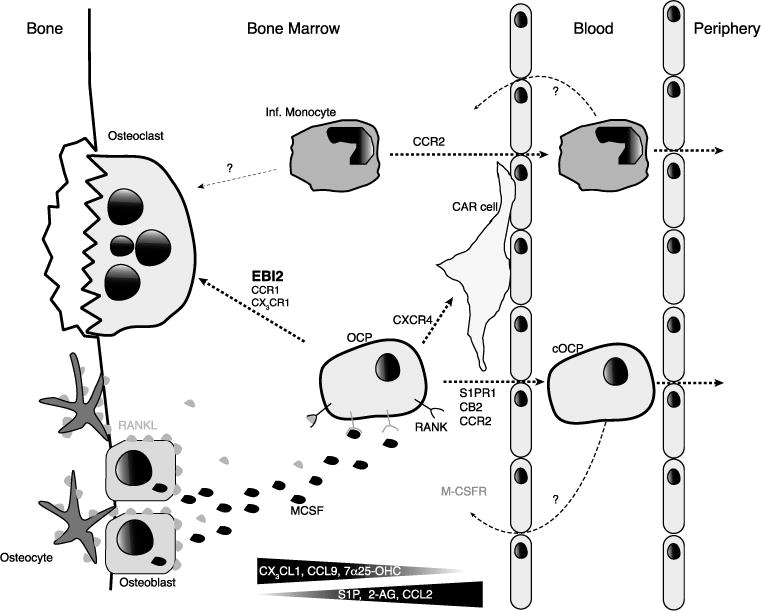Fig. 1.

Trafficking of osteoclast precursors in the bone marrow (BM), blood, and peripheral tissues. Monocytic osteoclast precursor cells (OCP) and inflammatory monocytes (Inf Mono) migrate into osteoclastogenic niches where osteoblasts (OB) and osteocytes provide important signals for osteoclast differentiation (MCSF and RANKL). EBI2 directs the migration of OCP to the endosteum, where the EBI2 ligand 7α, 25-OHC is presumably abundant. CX3CR1 promotes the retention of OCP in BM parenchyma, and possibly directs cells to the endosteum in response to CX3CL1 produced by OB. OB also express CCR1 ligands (e.g. CCL9) and CCR1 may also direct OCP to sites of osteoclast differentiation. S1PR1 is essential for the egress of monocytic cells in the bone marrow as they follow S1P gradients into the circulation and inflammatory monocytes egress via CCR2. CXCR4 is likely to guide OCP away from sites of osteoclastogenesis given that its ligand CXCL12 is abundant parenchymal and perivacular mesenchymal stromal cells, while it is reduced in OBs. The CB2 ligand 2-AG is likely abundant in the BM sinusoids, and may guide OCP away from osteoclastogenic niches. Both circulatory OCP and inflammatory monocytes re-enter into BM by unknown mechanisms.
